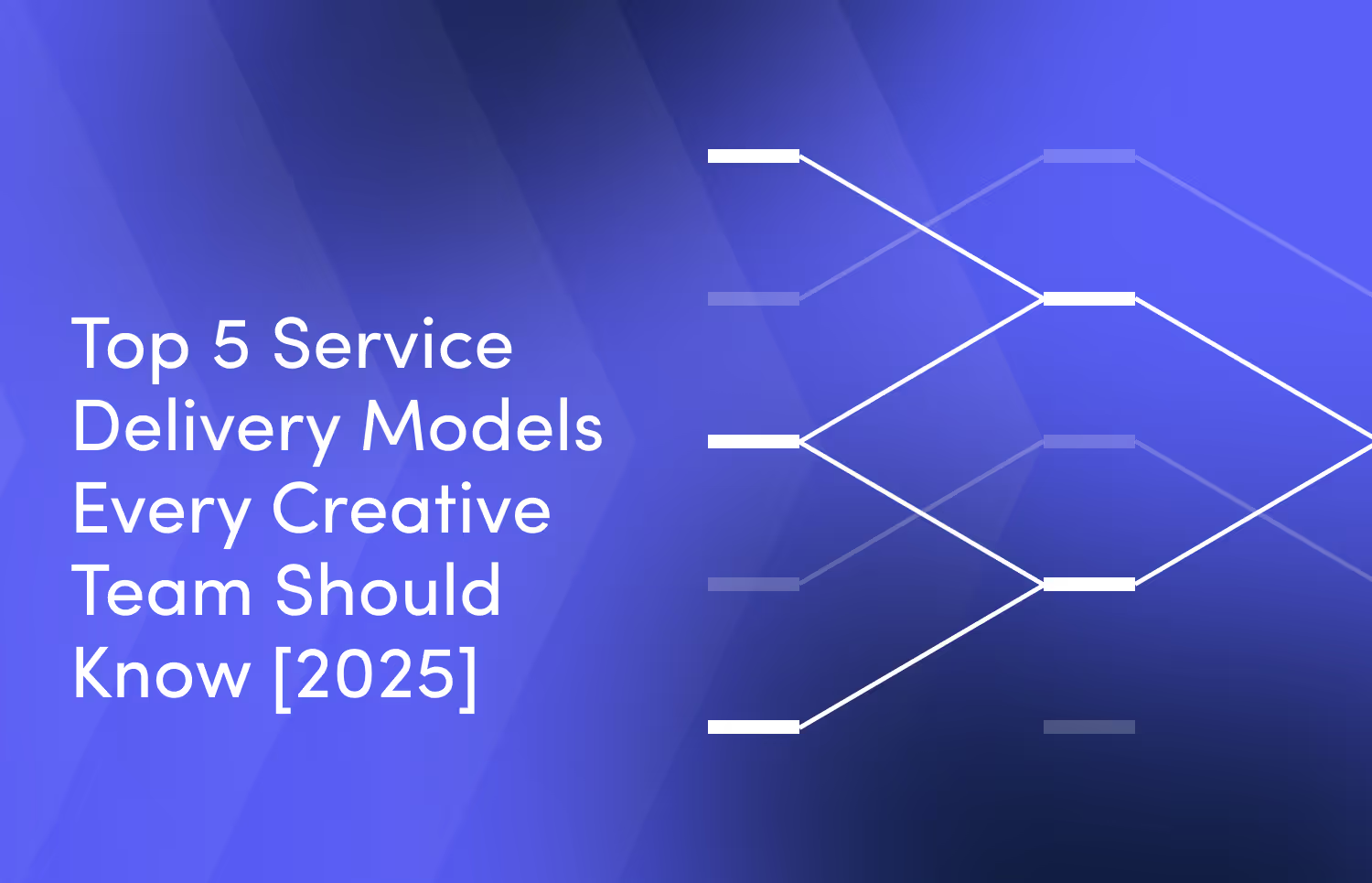Top 5 Service Delivery Models Every Creative Team Should Know
Scale your agency smarter with these 5 service delivery models plus real-world setup tips for each one.




It’s every creative agency’s dream to achieve streamlined operations, have satisfied clients, and sustainable and scalable growth. It’s like the pinnacle of creative agency success—that sweet spot between doing something you love and doing something to earn. However, more often that not, we hear so many horror stories of clients who change their minds every second, creatives not being paid enough, and teams feeling burned out and buried under crazy workload amounts and deadlines.
So how can your creative team achieve this zen mode? Real talk? It all starts with service delivery models.
For creative agencies, how you deliver your services can be just as important as the quality of the work itself. Service delivery frameworks can significantly impact your business’s profitability and scalability. From eCommerce-focused design studios crafting high-converting Shopify storefronts, to creative teams producing UGC ads and email campaigns for DTC brands—the right service delivery model directly affects your turnaround times, client satisfactions, and your agency’s ability to scale.
Let’s break down the top service delivery models every creative team must be familiar with and how—with the help of ManyRequests—you can determine which one best fits your agency based on each stage of its growth.
Each model has its own strengths depending on your team’s offerings, workflow preferences, and the type of clients you support. Here’s a quick rundown on the models we’ll cover:
Service delivery models describe and detail the way your creative agency structures and delivers its services to clients. Think of it as the blueprint for how work is requested, fulfilled, and billed. Whether it’s a single project, an ongoing partnership, or a flexible, on-demand setup. And yes, this also includes agency pricing models.
The service delivery model has a direct impact on how efficiently your agency operates, how predictable your revenue is, and what kind of experience your clients receive. In other worlds, a clear model sets expectations on timelines, communication, pricing, and scope. This, in turn, helps you avoid scope creep, bottlenecks, or misalignment.
Here’s a quick breakdown on why implementing the right service delivery model matters:
Choosing the right model isn’t just an internal decision, it’s a strategic move that can shape your agency’s growth and client satisfaction over time.
So, what are the different models creative agencies must consider implementing? Let’s explore them in the next section.
Service delivery models are built differently. Likewise, no two creative agencies operate the same way. Below are five delivery models, along with how you can implement them seamlessly with help from the ManyRequests platform.


Each model has its own strengths, and some agencies even blend two or more to match different clients needs. The key is clarity, consistency, and using tools like ManyRequests to automate the busy work so you can focus on creative output.
Once you’ve chosen the right service delivery model for your creative agency, the next step is making it work. That’s where ManyRequests comes in. It’s a powerful all-in-one platform built specifically for creative agencies to streamline how they sell, deliver, and manage their services. In essence, ManyRequests help translate service delivery frameworks into a solid platform.
ManyrRequests lets you create and save custom templates for different service types. Whether it’s a productized package, monthly retainer or one-off project. This means you can:
Whether you’re offering a “Shopify Homepage Design” or “3 Email Campaigns per Month,” you can systemize your delivery from intake to handoff.
Say goodbye to repetitive manual tasks. With ManyRequests, you can build automated workflows that move projects forward without needing constant oversight. For example:
You can even automate billing cycles, reminders, and task assignments. All of which are tailored to the delivery model you’re using.
No more scattered email threads or Slack pings. ManyRequests offers a centralized client portal where clients can:
This minimizes back-and-forth and keeps everyone on the same page. This is especially helpful when juggling multiple client relationships or working with retainer/subscription clients who need regular updates.
ManyRequests supports both project-based and recurring billing models:
Built-in billing automation ensures you’re paid on time and reduces administrative overhead, freeing up more time to focus on creative work.
Choosing the right service delivery model—whether it’s project-based, retainer, hybrid, credit-based, or productized—can have a major impact on your agency’s efficiency, client satisfaction, and growth potential.
The best model is the one that aligns with your workflows and client needs.
Ready to systemize delivery? Start your free trial with ManyRequests today and see how easy it is to scale your creative agency.